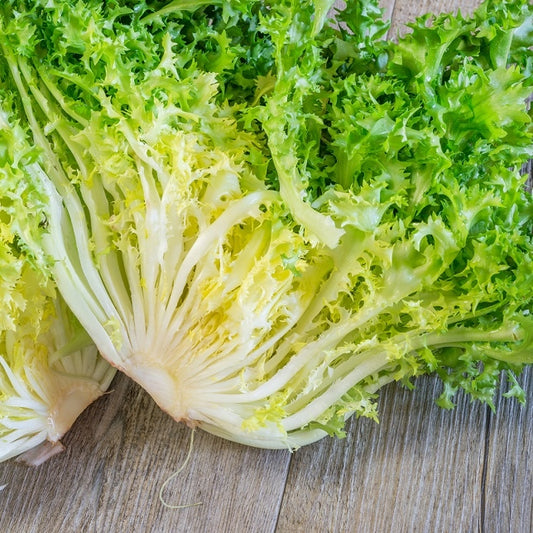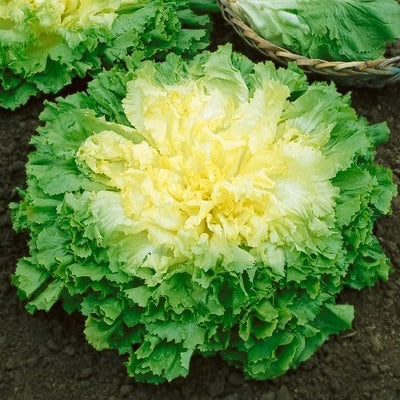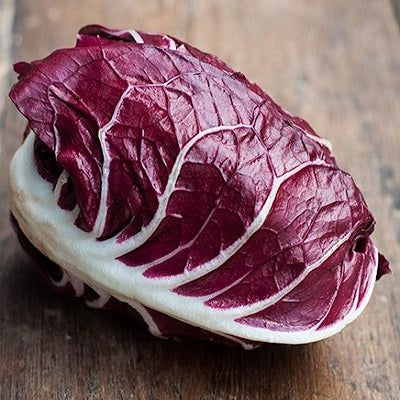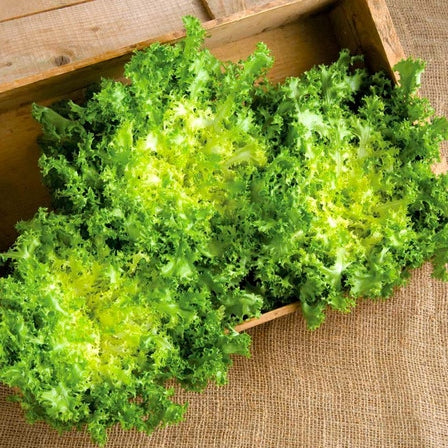-
main-collection-product-grid

Endive Seeds - Frisee
Provides fun texture and taste to saladsEndive Seeds - Frisee
Provides fun texture and taste to saladsRegular price As Low As $4.49Regular priceUnit price per -
main-collection-product-grid

Endive (Escarole) Seeds - Broadleaf Batavian
Large, lettuce-like leaves great for saladsEndive (Escarole) Seeds - Broadleaf Batavian
Large, lettuce-like leaves great for saladsRegular price As Low As $4.49Regular priceUnit price per -
main-collection-product-grid

Endive Seeds - Rossa Di Verona Radicchio
Best served roasted or grilled in olive oilEndive Seeds - Rossa Di Verona Radicchio
Best served roasted or grilled in olive oilRegular price As Low As $4.49Regular priceUnit price per -
main-collection-product-grid

Endive Seeds - Green Curled Ruffec
French heirloom variety with dark, deeply cut leavesEndive Seeds - Green Curled Ruffec
French heirloom variety with dark, deeply cut leavesRegular price As Low As $4.49Regular priceUnit price per
Growing endive in your garden
- 4 endive seed varieties
- A nutritious leafy green that comes from the chicory plant family
- Endive has a crisp, fresh, and clean flavor
- A cool season annual, great for container gardens
What is endive?
Endive is a member of the chicory family- a group of greens that includes escarole, radicchio, frisee, and curly endive. It has a nutty flavor with a slight bitterness and a crisp texture. The flavor becomes sweeter and more nutty when endive is cooked. Many people enjoy eating endive raw in salads, or used as substitute for chips because of their crunchy nature. Various types of endive are good sources of vitamins B, C, and K, and minerals calcium, magnesium, iron, zinc, potassium, folate, and selenium.
What and how to cook with endive
If you're interested in growing endive, but unsure how to cook with it, there are many delicious ways to employ these greens. Try a frisee salad with a poached egg, or place some leaves under a fresh grilled fish, vegetable, or tofu steak. Sautee the dark outer leaves with some olive oil or butter and then finish with a dash of maple syrup. Once you learn how to prepare endive, you'll be introducing it to all kind of dishes.
Endive for small space gardening
Though endive seeds will grow in both spring and fall, a fall planting is ideal as frost improves the plant's flavor and decreases its bitterness. Endive seeds are good candidates for container gardens. Try growing your endive in a container on your patio or deck—close enough to the kitchen to add to your dinner salad! Though, traditionally, endive is notoriously difficult to grow, our frisee, escarole, and ruffec are much easier than the laborious belgian endive variety.
How to plant and harvest endive
For best results when growing endive, start the seeds indoors as early as eight to ten weeks before you are ready to transplant. Use egg cartons or pot small pots and keep the seeds warm and moist as they are germinating. Transfer the seedlings outside once the danger of frost has passed.
Endive can be harvested 80 to 90 days after planting, when leaves are about five to six inches tall. For continuous harvest, cut the endive right above soil level when harvesting. When harvesting in the fall, be sure to do so before any frost. Frost will ruin your endive crop.
For more information about growing, planting, and caring for endive seeds, see the Endive Seeds Planting Guide.



